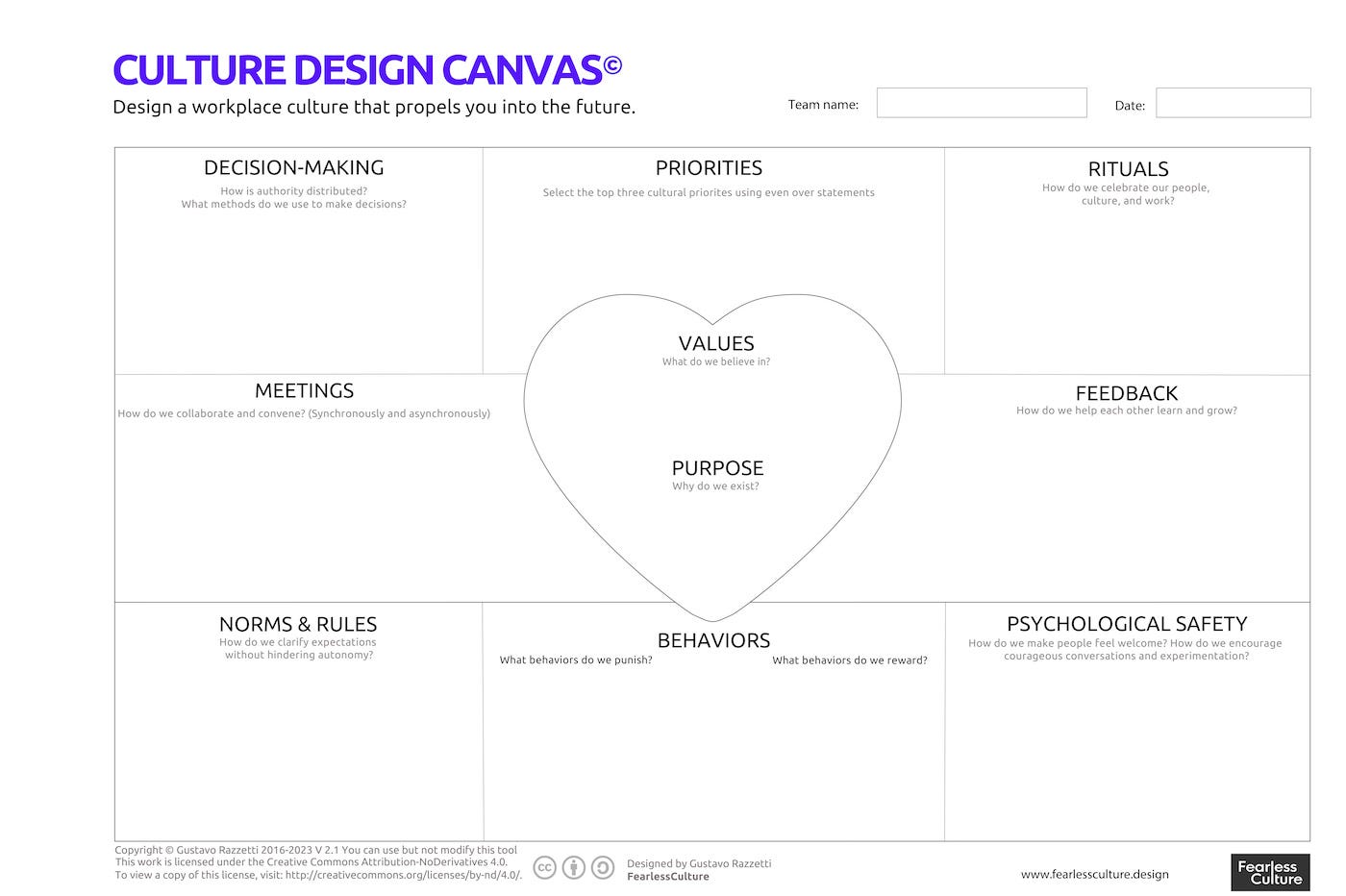Culture Design Canvas FAQ: The Complete Guide
Frequently Asked Questions about the Number One Culture Mapping Tool
I can't believe it's been seven years since I conducted my first open Culture Design Masterclass, teaching people how to effectively facilitate the Canvas. It was the first time I opened the tool to the world after using it exclusively with my clients. My thought was simple: We can't change the world alone.
This FAQ is another step toward helping people change culture effectively.
Whether you're discovering the Culture Design Canvas for the first time or returning after years away, this is your complete guide. I'll clarify the basics for beginners and provide important updates and reminders for experienced practitioners.
This FAQ is organized into five categories addressing a range of questions, such as how to use the Canvas, template download, licensing terms, and different applications.
1. Understanding the Culture Design Canvas
What is the Culture Design Canvas—and why do most culture tools fail?
The Culture Design Canvas is a strategic tool that helps map, assess, and design workplace c…
Keep reading with a 7-day free trial
Subscribe to Demystify Culture to keep reading this post and get 7 days of free access to the full post archives.



